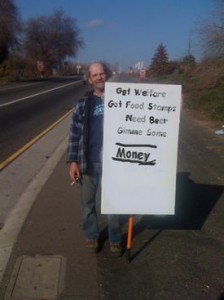by Jack
Ten principles for managing a homeless crisis (if you are in a hurry, just go to 6 thru 10 for the bottom line)
Principle 1: Crisis resolution
Every situation that could result in homelessness is a crisis for the person experiencing it. Crisis resolution responses must include: rapid assessment and triaging, based upon urgency; an instant focus on personal safety as the first priority; de-escalation of the person’s emotional reaction; definite action steps the individual can successfully achieve; assistance with actions the individual is temporarily unable or unwilling to attempt; and returning the person to control over their own problem-solving.
Principle 2: Client choice, respect and empowerment
People in crisis may feel paralyzed by the urgency and the potentially devastating consequences of their situation. Homelessness prevention services must help people in crisis regain a sense of control and feeling of empowerment to actively overcome obstacles. A constant emphasis on the client’s goals, choices, and preferences, an unwavering respect for their strengths, and reinforcement of progress are essential for empowerment. This does not mean clients are protected from the natural consequences of their actions.
Principle 3: Provide the minimum assistance necessary for the shortest time possible
 Respect includes “letting go” as soon as the person has the resources, knowledge and tools to continue their lives–however they choose to live them. Providing “just enough” to prevent homelessness enables a program to help far more people in crisis. Often this means ensuring resources are used to help persons at-risk of losing housing of any kind—persons who would otherwise end up on the street or in an emergency shelter—before using resources to provide assistance for other needs. Providing non-essential assistance to a program client will cost someone else in the community their housing.
Respect includes “letting go” as soon as the person has the resources, knowledge and tools to continue their lives–however they choose to live them. Providing “just enough” to prevent homelessness enables a program to help far more people in crisis. Often this means ensuring resources are used to help persons at-risk of losing housing of any kind—persons who would otherwise end up on the street or in an emergency shelter—before using resources to provide assistance for other needs. Providing non-essential assistance to a program client will cost someone else in the community their housing.
Principle 4: Maximize community resources
Mainstream assistance programs are intended to be the backbone of every community. Creating duplicate services for a sub-population such as people at risk of homelessness allows mainstream agencies to continue to bypass or ineffectively serve people who have a right to better quality and access. Duplication also wastes valuable, limited resources that could be spent to keep more households from becoming homeless.
Principle 5: The right resources to the right people at the right time
The earlier a program intervenes in a housing crisis, the lower the cost. The outcomes may look impressive, but research shows that most people who receive prevention assistance would not have become homeless even without assistance. The later the intervention, the more costly and the lower the success rate. But at the latest stages of an individual’s housing crisis, it is virtually certain she or he would have become homeless without assistance. Good prevention programs strive to target people who have the highest risk of becoming homeless but who also have a good chance of remaining housed if they receive assistance.
Principle 6: Not every homeless person is a good person with bad luck who deserves a break. Some are getting exactly what they deserve. This is reality 101.
Principle 7: Not every person who needs aid will accept it. So no matter how much you do, this problem is never going away. The poor will always be among us, and his says thats a fact!
Principle 8: Some people are determined to fall back on their familiar bad habits, no matter how much aid and encouragement is given to them. These are people who are determined to go their own way, do their own thing and say, to hell with the rest of us! They have no respect for us, for our boundaries or the law. Their moral limits are guided by whatever they think they can get away with at the moment. They are predators of one form or another. They only modify their bad behavior when they are forced into it. They are habitual offenders and incurable until they decide they have had enough of living on the street and nothing we can do is ever going to change them.
Principle 9: Compassion and generosity lose their value when they are not backed up by reasonable expectations and accountability. This is where the law sets limits on the minimal standards of personal conduct expected by our society. We can’t legislate moral behavior, but we can punish immoral/illegal behavior and we should or we will have nothing left to call a society.
Principle 10: It is possible to spend oneself into poverty while trying to lift others out of it. The same thing could be said when government tries to eliminate poverty with an excess of your tax dollars. Properly proportioned giving is sustainable, all other forms are not.

As I see it, there are four types of homeless;
1) People who have fallen on hard times, who sincerely would like to get back on their feet.
2) Mentally ill, who need medial care.
3) People who don’t care, don’t want to be burdened with working.
4) Drug and substance abusers, who could care less about themselves or anybody else.
First we need a way to sort them out. People in the first category should be helped out. The mentally ill should be cared for. Funding for mental health care is not politically popular by either party.
Most of the crime comes from the people in category three and four. These people require tough law enforcement and incarceration.
It’s going to take money to deal with each type. Are we willing to pay for it?
This is some kind of hoax, right? Trying our hand at satire?
I mean, you can’t be serious.